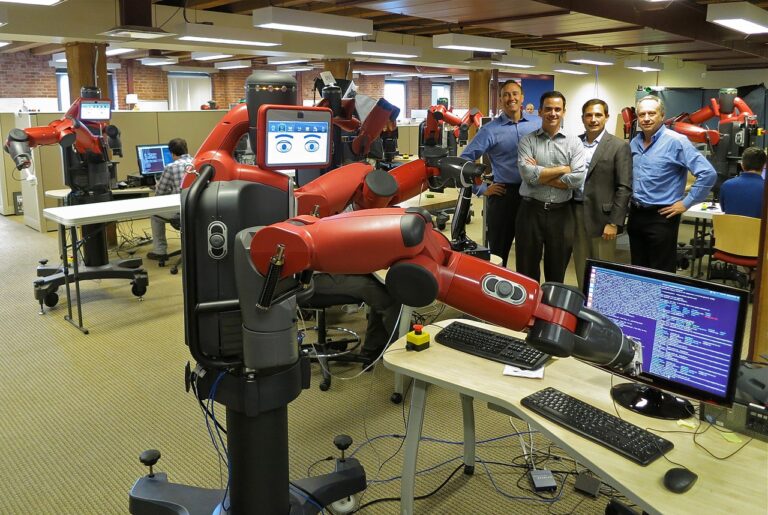
Dr. David Doorey is a Professor of Labor and Employment Law at York University in Toronto.
Few aspects of the U.S. labor law model are more confounding to outsiders than the right of employers to hire “permanent” strike replacements. It seems absurd to insist that workers have a legally protected “right to strike” when their employer can simply hand their jobs to another person and then not give it back when the strike ends. To a Canadian, for example, recent headlines announcing that Kellogg intended to hire “permanent replacements” to fill the jobs of many of its 1400 striking employees were a head-scratcher.
The Fallacy of the Need for Permanent Replacements
In its seminal 1938 ruling in Mackay Radio, the U.S. Supreme Courtfound not just that employers can hire replacement workers during a strike to continue operating, but also that the employer “is not bound to discharge those hired to fill the place of strikers upon the election of the latter to resume their employment in order to create places for them.” In 1991, the International Labour Organization determined that the permanent replacement doctrine threatened the free exercise of the right to strike. In its response to the complaint filed by the AFL-CIO, the U.S. government justified the doctrine in part as follows:
It is an economic fact that employers may not be able to continue operations during a strike unless they hire replacement workers. Moreover, workers with the requisite skills are often unwilling to take only a temporary job, or to cross a union picket line for less than an offer of permanent employment.
This argument that employers could not attract replacement workers without offering “permanent” jobs is part of the accompanying folklore of the Mackay Radio doctrine. In a legal system in which most employees are employed “at will” and where employers increasingly rely on temporary, non-standard employment, this concern with attracting “permanent” workers seems almost comical.
Certainly, the argument that employers have difficulty finding temporary replacements is betrayed by Canadian experience. In Canada, where the use of permanent replacements is mostly prohibited, employers have little problem finding temporarily replacements. In recent years, employers across Canada, from Alberta, to Saskatchewan, to Ontario, to Newfoundland and Labrador have hired thousands of temporary replacement workers. Last year, a Saskatchewan refinery built a temporary labour camp to house hundreds of temporary replacement workers.
How Canada Rejected the Use of Permanent Replacements
The Canadian Wagner model shares many features of the U.S. model, but there are important differences. Some of those differences were introduced by design when the Wagner model was initially imported into Canada in the 1940s, such as the statutory prohibition on mid-contract strikes in Canada which has no NLRA equivalent. In other instances, the two countries’ models diverged over time, frequently because Canadian governments declined to follow U.S. reforms designed to weaken collective bargaining. This is the case for example regarding the introduction of “right to work” legislation in the U.S. following the passage of the Tart-Hartley Act in 1947.
Canada’s more restrictive approach to the use of “permanent replacements” was a result of a legislative response to a concern that the Mackay Radio doctrine might infiltrate Canadian labor law. Early Canadian labor legislation included language, like section 2 of the NLRA, specifying that a worker does not cease to be an employee simply because they strike or are locked out. However, what that language meant in terms of employers’ right to hire permanent replacement workers was uncertain.
Then, in case called Canadian Pacific Railway v. Zambri decided in 1962, nearly 30 years after Mackay Radio, the Supreme Court of Canada considered the legal status of strikers. The SCC ruled that the provision that continued employment status through a work stoppage created a special class of protected employees and therefore it was an unfair labor practice for an employer to terminate those employees simply because they were involved in a work stoppage. However, in concurring reasons, Justice Locke suggested in obiter that under Canadian law, as in the U.S., an employer was not required to terminate a replacement worker to make room for a returning striker. Justice Locke referred to Mackay Radio in support of this interpretation:
Roberts J., who delivered the judgment of the court [in Mackay Radio], said, inter alia, that it did not follow that an employer guilty of no act forbidden by the statute had lost the right to protect and continue his business by supplying places left vacant by the strikers and was not bound to discharge those he had thus hired upon the election of the strikers to resume their employment in order to create places for them. That is the law in Canada also, in my opinion.
For a period following these comments, there was uncertainty about whether Canadian employers were entitled to hire permanent strike replacements like their U.S. counterparts.
However, that uncertainty was clarified in most jurisdictions by legislation. Most provinces and the federal government passed legislation that limited employers to hiring temporary replacement workers during a lawful strike or lockout. The federal Canada Labour Code (Section 87.6) language is typical of this approach:
At the end of a strike or lockout not prohibited by this Part, the employer must reinstate employees in the bargaining unit who were on strike or locked out, in preference to any person who was not an employee in the bargaining unit on the date on which notice to bargain collectively was given and was hired or assigned after that date to perform all or part of the duties of an employee in the unit on strike or locked out.
Even Canada’s most conservative province, Alberta, guarantees the right of strikers to be reinstated at the conclusion of a strike.
The small maritime provinces are the outliers without any specific statutory restriction on the use of permanent replacements, although in practice I’m not aware of permanent replacements being used there. Canadian labor boards have also found that a decision by an employer to retain replacement workers over striking or locked out workers can constitute unlawful retaliation for exercising the right to strike and insistence by an employer on inclusion of a right to retain replacement workers in a back-to-work protocol following a strike has been ruled bad faith bargaining in at least one decision. Therefore, even absent an expressed prohibition on the use of permanent replacements, Canadian labor law imposes significant obstacles to their lawful use.
Two jurisdictions, British Columbia and Quebec, go further still and prohibit employers from using replacement workers to perform bargaining unit work entirely, including both existing employees and newly hired workers. The Quebec “anti-scab” legislation (s. 109.1) was introduced in 1977 following a prolonged period of labour unrest and picket line violence. BC’s left-leaning New Democratic Party introduced that province’s ban on replacement workers in 1993 and the law has survived notwithstanding an extended period in which the conservative Liberal Party governed the province.
Extended experience in Canada with laws prohibiting permanent replacement of strikers undermines the claim that employers would be unable to attract workers if strikers were entitled to their jobs back following a work stoppage. With that sheet pulled back, we can focus on the real purpose of the Mackay Radio doctrine, which is to undermine the right to strike and to discourage U.S. workers from exercising it.










Daily News & Commentary
Start your day with our roundup of the latest labor developments. See all
January 5
Minor league hockey players strike and win new deal; Hochul endorses no tax on tips; Trump administration drops appeal concerning layoffs.
December 22
Worker-friendly legislation enacted in New York; UW Professor wins free speech case; Trucking company ordered to pay $23 million to Teamsters.
December 21
Argentine unions march against labor law reform; WNBA players vote to authorize a strike; and the NLRB prepares to clear its backlog.
December 19
Labor law professors file an amici curiae and the NLRB regains quorum.
December 18
New Jersey adopts disparate impact rules; Teamsters oppose railroad merger; court pauses more shutdown layoffs.
December 17
The TSA suspends a labor union representing 47,000 officers for a second time; the Trump administration seeks to recruit over 1,000 artificial intelligence experts to the federal workforce; and the New York Times reports on the tumultuous changes that U.S. labor relations has seen over the past year.